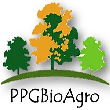Banca de QUALIFICAÇÃO: DANIELE PAULA MALTEZO
Uma banca de QUALIFICAÇÃO de MESTRADO foi cadastrada pelo programa.DISCENTE : DANIELE PAULA MALTEZO
DATA : 17/11/2020
HORA: 08:00
LOCAL: Alta Floresta, MT.
TÍTULO:
Cytogenotoxicity and genetic diversity of Copaifera langsdorffii Desf. (Fabaceae) native to Mato Grosso, Brazil
PALAVRAS-CHAVES:
Copaiba, Genetic variability, ISSR, Allium cepa, Mitotic index.
PÁGINAS: 65
GRANDE ÁREA: Outra
ÁREA: Ciências Ambientais
RESUMO:
Copaifera langsdorffii Desf. stands out among the species of the genus, for having a wide distribution in Brazil, and for being widely used in folk medicine to treat diseases of the respiratory tract, as well as in tonsillitis and topical use in wounds and eczema. This study aimed to carry out the molecular characterization of 27 individuals of C. langsdorffii collected in the municipality of Alta Floresta, MT, and to evaluate the toxic, cytotoxic and genotoxic potential of the species. For the evaluation of genetic diversity, 12 primers were used, which amplified 106 fragments, with 98.11% of polymorphism. The content of polymorphic information (PIC) of each primer ranged from 0.45 to 0.81. The Jaccard matrix indicated that 41% of the combinations among individuals are within the 0.41-0.50 range of dissimilarity, with an average of 0.49. The UPGMA method formed four groups, thus revealing genetic diversity among individuals in this population. Individuals 17 and 23 were in an isolated group, showing greater genetic dissimilarity in relation to the other individuals. The assessment of toxic, cytotoxic and genotoxic potential was performed using the Allium cepa test. The aqueous extracts (infused and decocted) obtained from the stem bark and leaves of C. langsdorffii were evaluated, with five different concentrations and two controls, with distilled water (negative control) and glyphosate at 1% (positive control). The growth of the root system (CSR), the mitotic index (MI), and the frequency of chromosomal changes and/or abnormalities in the phases of cell division were evaluated.The greatest reductions in CSR were found in decocted extracts (stem bark and leaves). For both parts of the plant, the extract decocted in the concentration (0.032 mg ml -1) presented lower MI, with lower value than MI of the positive control. The concentrations 0.002 mg ml-1 of the infused bark extract and 0.004 mg ml-1 of the decocted leaf extract showed 4.19 and 3.55% of cell aberrations, respectively (chromosomal changes and/or abnormalities in the phases of cell division), behind only to the positive control of the leaves with 5.71%. The results obtained indicate that the population of C. langsdorffii evaluated has a high genetic diversity and potential to compose programs aimed to the preservation of the species and the capacity to integrate germplasm banks. This study evidenced the toxic, cytotoxic and genotoxic potential of the species, emphasizing the need for caution when using it as a herbal medicine, since it can cause damage to human health.
MEMBROS DA BANCA:
Presidente - 32143004 - ANA APARECIDA BANDINI ROSSI
Interno - 70141009 - OSCAR MITSUO YAMASHITA
Externo ao Programa - 292282001 - JULLIANE DUTRA MEDEIROS
Externo ao Programa - 221762011 - JULIANA DE FREITAS ENCINAS DARDENGO



